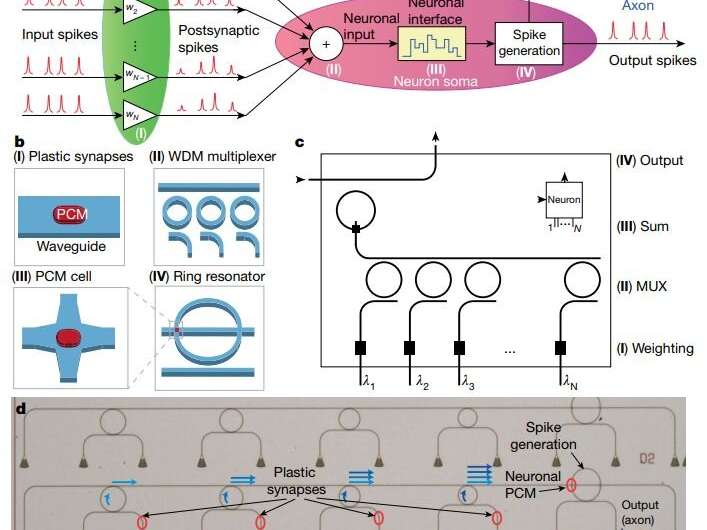May 9, 2019 report
An all-optical neural network on a single chip

A team of researchers from the University of Münster, the University of Oxford and the University of Exeter has built an all-optical neural network on a single chip. In their paper published in the journal Nature, the group describes their chip, which has no optical-to-electronic conversions, and how well it worked. Geoffrey Burr with IBM Research – Almaden has published a News and Views piece discussing the work by the team in the same journal issue.
Modern computers run on electricity—it powers devices and serves as a storage and data medium. But for several decades, scientists have wondered if it might be possible to use light as the data medium—crunching photons instead of electrons. Engineers have many hurdles in attempting to create such a device, however, most prominently the bottlenecks that arise when converting between optical and electrical systems. In more recent times, there has been a renewed interest in building an optically based computer—but now, the focus is energy conservation. Big modern computers used for heavy-duty applications require a lot of electricity. Logic suggests that computers based on light should be less energy intensive, most particularly because they would not generate as much heat, making cooling systems obsolete. In this new effort, the researchers have taken a step toward the creation of optically based computers by building an all-optical neural network on a single chip.
The researchers noted that one type of computer system seemed most amenable to optics—deep neural networks. This is because such networks rely on artificial neurons with synaptic connections that can be weighted based on past learning experiences. They noted also that crystalline phase change materials could also serve such a purpose. They are materials that experience a change in structure when heated—in this case, by a laser. Using such a material, the team built a chip with four neurons connected with 60 synapses using waveguides to control the flow of information represented by light. Testing showed the chip was capable of learning, recognizing patterns and performing computations.
More information: J. Feldmann et al. All-optical spiking neurosynaptic networks with self-learning capabilities, Nature (2019). DOI: 10.1038/s41586-019-1157-8
Journal information: Nature
© 2019 Science X Network




















